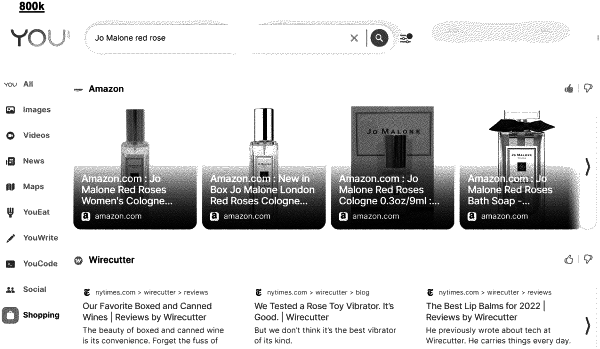| CPC G06F 16/9535 (2019.01) [G06F 16/9538 (2019.01); G06F 16/954 (2019.01)] | 20 Claims |

|
1. A processor-implemented method of generating a plurality of search results from user-controlled data sources in response to a search query, the method comprising:
receiving, at a search server and via a communication interface, a search query for performing an Internet search;
receiving, via a user interface, a user configuration input that deselects at least one data source server prior to the Internet search;
generating an input containing the search query and a user context indicating a user preference of one or more data sources associated with a user who initiated the search query, to a neural network based ranking model, wherein the user context includes at least the user configuration input;
generating, by the neural network based ranking model implemented on one or more hardware processors at the search server, a ranked list comprising a first data source server and a second data source server at which a search is to be performed based on the search query, based at least in part on the input of the search query and the user context, wherein the first data source server is ranked higher than the second data source server based at least in part on the user preference, and wherein both the first data source server and the second data source server are subject to the user configuration input;
transmitting, via a first search application programming interface (API) integrated at the search server and over a network, a first search input customized from the search query to the first data source server;
transmitting, via a second search API integrated at the search server and over a network, a second search input customized from the search query to the second data source server while refraining from transmitting any search request including the search query and any subsequent search queries to the at least one data source server that is deselected by the user configuration input;
receiving, via the first search API and the second API, a first set of search results from the first data source server and a second set of search results from the second data source server, respectively, wherein the first set of search results and the second set of search results are obtained by searching within the first data source server and the second data source server based at least in part on the first search input and the second search input, respectively; and
transmitting the first set of search results and the second set of search results to a user device thereby causing a user interface at the user device to display, a first user-engageable widget displaying a first visual indication of the first data source server corresponding to the first set of search results, and a second user-engageable widget displaying a second visual indication of the second data source server corresponding to the second set of search results.
|